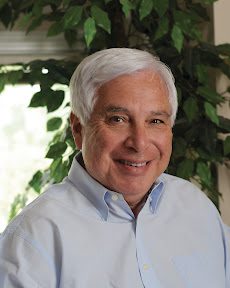
As the former head of Motorola University, Bill Wiggenhorn took the role from a specific, learning-focused endeavor to a global, broad-based development driver for employees in markets near and far.
by Deanna Hartley
August 15, 2012
Bill Wiggenhorn joined Motorola in 1981 as director of what was then called the Motorola Education and Training Center and worked his way to president of Motorola’s learning and development institution in 1986.
The center, which was later renamed Motorola University, wasn’t just set up for employee development. A primary goal was to educate customers — institutions, regulators, suppliers and employees — in newly created markets.
Wiggenhorn, who has since started his own consulting business, Main Captiva LLC, said he loved that he didn’t have a typical “day on the job.”
Travel was a significant part of his job as president of Motorola University, and he got to rub shoulders with foreign leaders such as the prime minister of Malaysia and the president of China. Traveling to visit the company’s operations across the globe enabled him to grasp the needs of local managers, government officials and local customers, and developed targeted learning and development.
He recalls a piece of advice passed along to him by Bob Galvin, who was chairman and CEO for much of Wiggenhorn’s tenure at Motorola.
“Bob said to me, ‘Bill, when you go to a new location, make sure you take two suitcases — one filled with the experience and wisdom we would like to share, and one empty [into which] you will pack the wisdom and knowledge that they share with you,” Wiggenhorn said.
This give-and-take mentality also was reflected in his relationship with Motorola University’s board of directors. The board, which is separate from the firm’s corporate board of directors, included senior executives from each of Motorola’s businesses, regions and major functions, such as HR or IT.
“Part of my job was to keep them informed and also to understand where they felt we needed to make investments in education and training — and to answer their questions regarding what was the return on that education,” Wiggenhorn said.
In his two decades at the company, Motorola University grew from four to 24 locations. At the end of his first year, in 1981, the education arm of Motorola had 23 people; by the end of the 1990s, roughly 2,000 people were working in the function globally on a part- or full-time basis.
“In the beginning,” Wiggenhorn said, “it was really just directing more of a traditional training organization and the focus was on our own [domestic] employees — even though our charter did include customers and suppliers.”
The next phase catered to employees globally, but by the late 1980s into the 1990s, Motorola University also focused on customers, suppliers and government regulators.
It even reached the point where different colleges — such as a college of engineering or sales and marketing; a college of leadership and management — were established within the firm’s learning function. Motorola University also set up a network of educational partners — universities and certification companies — in different parts of the world.
But with all the improvements and changes under Wiggenhorn, the fundamental underpinning of learning at Motorola remained — to ensure education programs empower employees to reach their full potential.



